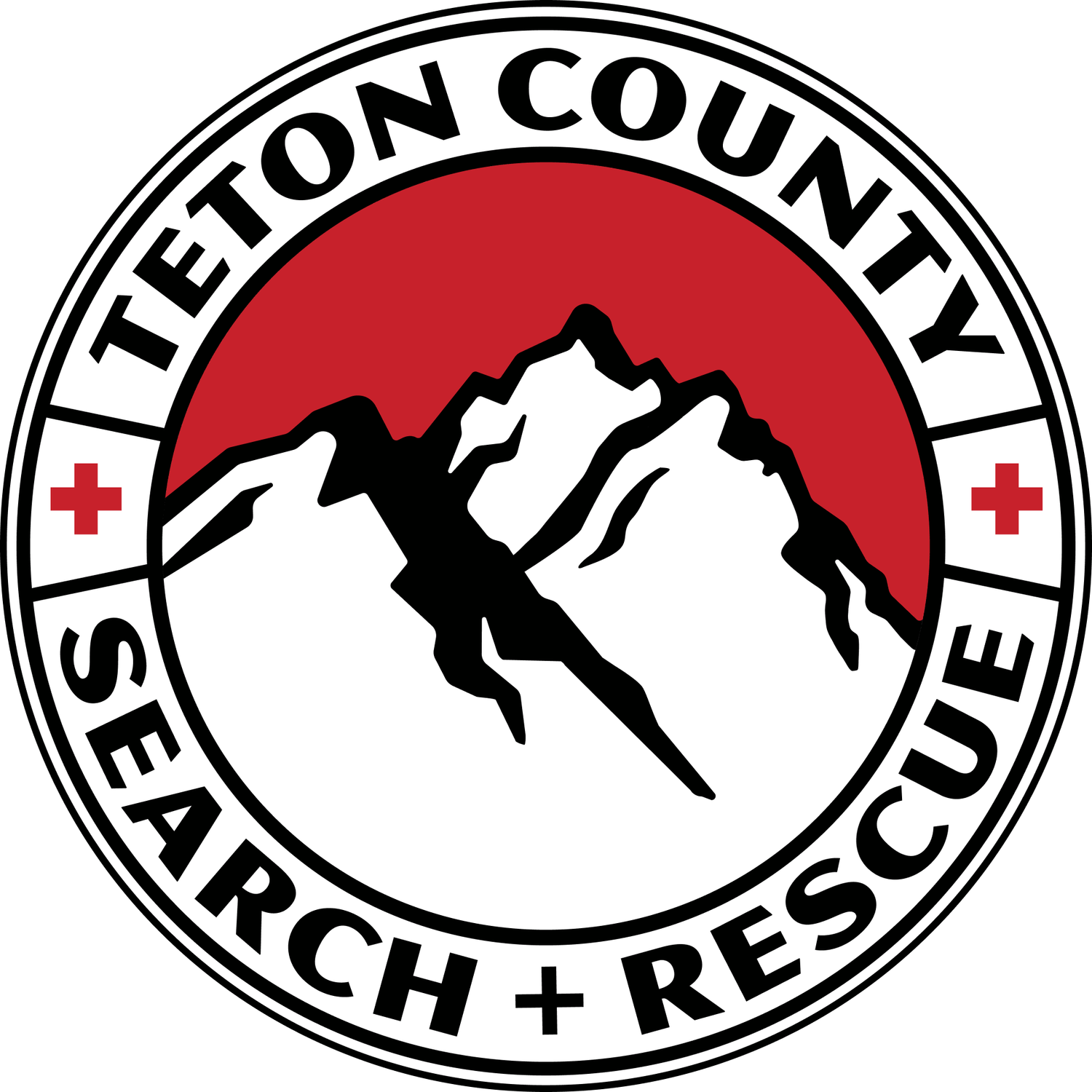A Jackson resident for the last 19 years, Jen Reddy became a TCSAR volunteer in 2015, and this spring became one of the newest members of the elite short-haul team. She is also an artist who designs much of the graphics you see on TCSAR’s communication materials, stickers, and merchandising. She gets much of her inspiration from her time outside, and says she tries to “capture the joy, whimsy and connection I feel while out skiing, riding my bike, or just wandering around in the woods.” She loves working with watercolors because of how portable they are, and because they force you to accept your mistakes and figure out how to make the piece still work.
“It’s a good practice for life,” she says.
Why should people support Heli-Yes?
The helicopter is a vital, life-saving resource for our community. As recreationalists, we like to explore deep into the mountains and push ourselves. Ground-based rescue is not always feasible, and even if it is, the time it would take to hike or ski into an accident site and then wheel or drag the injured party out can be the difference of life and death.
Where are you from and how long have you lived in Jackson?
I was born in Connecticut, and lived in Vermont and Colorado before moving to Jackson 19 years ago.
What music are you currently listening to?
Nightmares on Wax, specifically his live DJ sets
What motivated you to become a TCSAR volunteer?
One of my closest friends had been involved in a serious ice-climbing accident in Colorado. I feel so grateful to the incredibly skilled rescuers who got him out of the field. He wouldn't have survived if it wasn't for them. I joined TCSAR because I wanted to be that person who doesn't hesitate to help when it's someone's worst day.
Why did you want to join the short-haul team?
I wanted to become a better rescuer. I'm comfortable skiing and negotiating steep, exposed and technical terrain, which is frequently where short haul operations are required. I thought I could use the skills I had developed skiing and playing in the mountains and apply them to search and rescue.
How does someone become a short-haul team member?
Once you've become a member of TCSAR and have completed the initial general team training, you can submit an application to join the short haul team. Applications are then reviewed and qualified applicants are accepted into the program. As a new member on short haul, we have to complete a number of training tandem flights observing the sequence of operations calling in the helicopter, hooking into the rope, calling in the landing and unhooking again from the rope once on the ground in the field. Once you've completed the observer flights, new short haulers have to complete a series of three independent flights with no faults or errors. Short-haul trains one to two times per month in addition to regular team training.
What is the most challenging aspect of short-haul?
Short-haul is highly choreographed and it's essential to keep focused on the big picture of the rescue. What are the winds doing? Where is a safe place to insert the rescuer that is still in close proximity to the patient? Do we have all the necessary gear and equipment to perform the rescue once on the ground? And is everyone involved communicating well and following the plan and capable of altering that plan if necessary? These are just a few of the things we have to keep in mind while feeling the stress and pressure of dangling from the end of a rope under a flying helicopter.
Illustration by Jen Reddy.
In your time at TCSAR, what or who has been your biggest influence?
A few weeks after I joined TCSAR, I witnessed a rescue performed in Grand Teton National Park. This was a massive interagency effort to rescue and recover skiers who had been involved in an avalanche. The cooperation and professionalism was remarkable and a little intimidating as a complete rookie watching the rescue develop.
The Jenny Lake Rescue Cache in Lupine Meadows was rapidly converted into a field medic site to stabilize patients as they were short hauled from the site of the avalanche. Not only was this a major rescue involving three-plus agencies working together to rescue multiple victims in deteriorating weather, but the victims were friends and co-workers of many of the rescuers involved. The tension, stress and anxiety at the rescue cache was palpable as the first victim was flown in.
I will never forget how Dr. Will Smith was able to take complete control of the situation, and instill a profound sense of calm and competency to the room. Standing in the doorway, watching all this unfold, I could feel the energy come down; collectively everyone's shoulders relaxed and their breathing became slow and focused. I clearly remember the moment when I thought to myself, "I want to be able to do that.” Every rescue I've gone on since I try to recall the ability to bring the sense of calm competency that Will was able to instill. I'm not sure I've ever told him how much he influenced me.
What has been the biggest reward of being a volunteer?
Everyone on the team loves adrenaline, the rush you feel when you get a callout. It's super fun and challenging to be on rescue and keep all the parts moving towards the same goal. But ultimately, what stays with me the longest and hits me the deepest is knowing that I helped someone when they really needed it.


